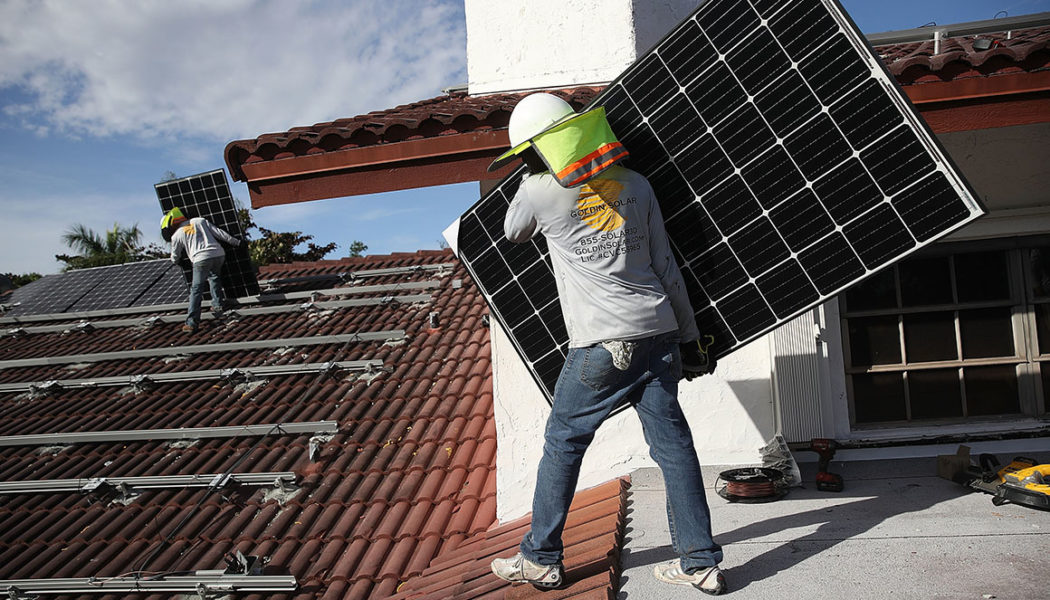
The Biden administration has big aspirations for the program, projecting it could spur the development of 134 gigawatts of new solar power capacity nationwide, the agency official said. To put that in perspective, total U.S. solar capacity today sits at 97.2 gigawatts, according to the Energy Department.
And it could lead to sizable savings, too: DOE estimated participants in the five initial pilot project states and the District of Columbia alone would save more than $1 billion on their energy bills annually.
“For many reasons, certain segments of our society are unable to participate in the benefits of solar energy and the savings potentially that flow from that,” the agency official said, speaking on condition of anonymity to discuss the plan before agencies had given final approval.
The news comes as consumers in the U.S. and across the world are facing rising energy costs, largely from spiking fossil fuel prices, including natural gas, the leading source of electricity in the U.S.
Expanding community solar is likely necessary to hit Biden’s climate goals, which include achieving a net-zero electric grid by 2035. It will enable people who rent their homes and have fewer ways to access solar panels or people without the means to finance such investments.
Community solar advocates say the approach democratizes renewable power by allowing people to own a slice of renewable power. But the method has faced some obstacles, as developers in some states have been accused of swindling people.
The Biden initiative therefore attempts to reduce consumer risk by using the federal government to essentially vet those developers. It will allow recipients from the Low Income Home Energy Assistance Program to log on to an online platform and shop for the project of their choice.
For now, the administration is taking input for how to design its Community Solar Subscription Program. Colorado, Illinois, New Jersey, New Mexico, New York and the District of Columbia have all agreed to participate.
The Biden administration selected states that have passed laws guaranteeing community solar programs result in electricity savings for consumers, the agency official said. Those savings range from 10 to 50 percent reduction in monthly power bills from participating in community solar.
That, in turn, will take the risk out of participating in community solar for people with the least means to afford a surprise bill, the official said.
“We’re trying to assist in the matchmaking but at the same time wanting to ensure that low-income people have some guarantee of cost savings,” the official said.
[flexi-common-toolbar] [flexi-form class=”flexi_form_style” title=”Submit to Flexi” name=”my_form” ajax=”true”][flexi-form-tag type=”post_title” class=”fl-input” title=”Title” value=”” required=”true”][flexi-form-tag type=”category” title=”Select category”][flexi-form-tag type=”tag” title=”Insert tag”][flexi-form-tag type=”article” class=”fl-textarea” title=”Description” ][flexi-form-tag type=”file” title=”Select file” required=”true”][flexi-form-tag type=”submit” name=”submit” value=”Submit Now”] [/flexi-form]









